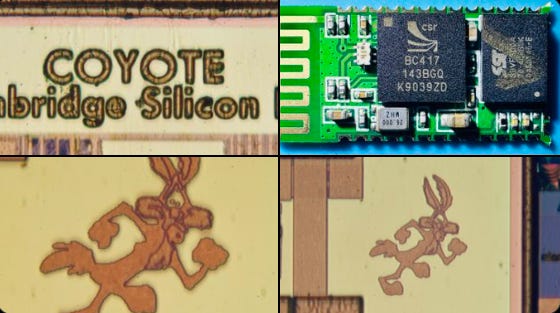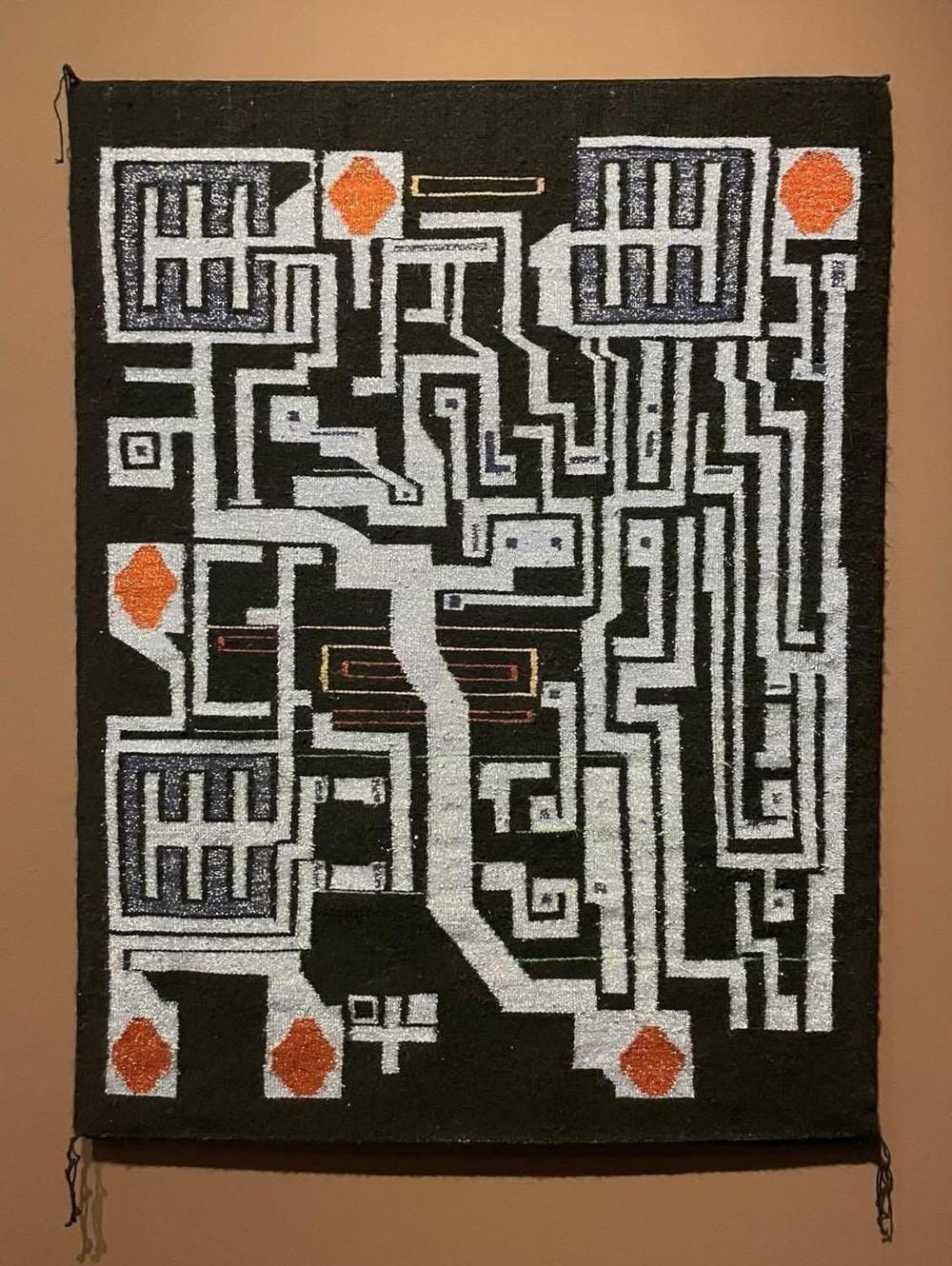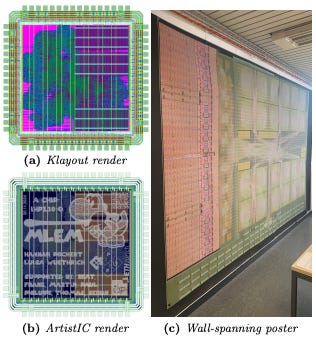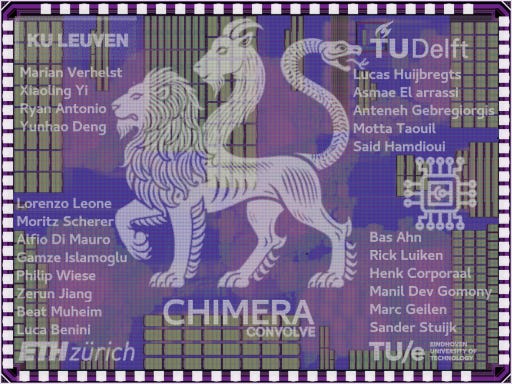The Hidden Art Inside Your Microchips
How engineers, artists, and musicians turned microchips into a canvas for human creativity.
Welcome to the weekday free-edition of this newsletter that is a small idea, an actionable tip, or a short insight. If you’re new, start here!
If you’re not a paid subscriber, here are some recent articles you’re missing out on:
New YouTube video up this week. Subscribe to the channel.
I am also starting to post short form content on Instagram. Follow along for more insights.
Today’s article is a guest post by my wife Sam Iyer, who writes her own brand new Substack publication called Human Frequency, focused on the human side of AI.
Check out her posts below!
When most people think about microchips, the focus is on function—signals, power efficiency, raw speed, and shrinking geometries. These are the metrics that define progress in semiconductor technology, and they tend to dominate the way we talk about chips.
Yet hidden within these hyper-engineered systems is another layer that is far less obvious. For several decades, engineers embedded tiny works of art into their designs: playful sketches, geometric patterns, and even musical motifs etched directly into silicon. These images, thinner than human hair and invisible without microscopes, represent some of the world's smallest artwork.

From the 1970s through the early 2000s, this practice was surprisingly common. The artworks could be as simple as a set of initials or as elaborate as a Tyrannosaurus rex cruising in a convertible, tucked away in unused real estate on the die.
In the early years, these doodles served as a practical safeguard against design theft, offering a form of protection before formal IP laws were strengthened in 1984. Later on, the motivation was less about security and more about expression—an outlet for creativity inside a process otherwise governed by rules, precision, and efficiency.
Today, dedicated collectors spend thousands annually buying electronic scrap, hunting for these silicon fossils. Social media has revived interest in chip art, with enthusiasts sharing discoveries and preserving this unique intersection of engineering creativity.
Art Beyond the Chip
The intersection of semiconductors and artistic expression extends far beyond hidden doodles. Some of the most compelling work comes from artists who use semiconductor imagery as their primary medium.
Marilou Schultz, a fourth-generation Navajo weaver, creates traditional textiles that incorporate computer chip patterns. Her 1994 weaving of Intel's Pentium processor required marking the chip design into 64 sections for accurate pattern transfer. Using traditional Navajo-Churro sheep wool and natural plant dyes, Schultz spent months on each piece, with daily progress adding just 1-1.5 inches. Her 555 timer weaving incorporates metallic threads representing the aluminum and copper traces in actual chips, creating striking light effects.

Contemporary digital artists increasingly leverage semiconductor design tools for creative work. The open-source ArtistIC (Arxiv) toolchain allows designers to use the top metal layer in the IC to create detailed, manufacturing-ready art layouts. The image below is the “Chimera” chip built by GlobalFoundries — the first heterogeneous microcontroller unit template built on the Cheshire host architecture, featuring a 256KiB L2 memory island and five specialized clusters for DNN applications. Explore the full gallery here.
Inversely, ArtistIC can create photorealistic chip art using GDS files, transforming circuit layouts into high-resolution artistic renders. The picture below shows a poster spanning the full length of a wall.

Sound from Silicon
And if we include music as art, the Yale Quantum Institute's Quantum Sound project represents groundbreaking work where artist Spencer Topel collaborated with physicists to transform superconducting qubit signals directly into music. Using analog and digital signal processing, they converted GHz-frequency signals from quantum computers into audible performances - creating what they call "the first-ever music created directly from measurements of superconducting quantum devices.” Check out the video below.
Circuit bending which involves modifying electronic devices to create new sounds and “living instruments” represents another form of semiconductor artistry. Pioneered by Reed Ghazala — the Father of Circuit Bending — in the 1960s, this practice involves altering circuit boards to generate unexpected audio outputs. The video below shows how this works starting from a simple electronic keyboard (love the way he fans off the smoke from the circuit at 3:28 😅)
Including this might be a stretch, but artist duo Semiconductor (Ruth Jarman and Joe Gerhardt), creates large-scale audiovisual installations using data from scientific equipment. Their work HALO, commissioned by Audemars Piguet, transforms subatomic particle collision data from CERN into a 13-foot cylinder with 360-degree screens and piano strings triggered by data streams converted into MIDI data that actuates hammers to strike the strings.
Color and Sound in a Dark Silicon World
These microscopic artworks remind us that even the most abstract technologies are shaped by people. By surfacing these details, it becomes easier to see semiconductors not as distant, opaque objects, but as products of human creativity. When an engineer leaves a personal symbol in a chip layout, it is a small assertion of identity within the constraints of design rules and process limitations.
As the technology itself grows more sophisticated, the role of creative expression does not disappear. It shifts into new forms—microscopic sketches, musical sequences driven by quantum effects, or even woven patterns in circuit layouts. These examples show that complexity does not suppress creativity, it pushes it into different directions.
The overlap between technology and art reflects two sides of the same human drive to build and to create. Whether it is an engineer leaving behind a cartoon in silicon or an artist reinterpreting chip layouts as cultural artifacts, both remind us that advanced devices still carry the imprint of their makers.
Even in the most technical domains, there is always room for the spark of human imagination.
Why do you think people don’t make as many silicon doodles anymore? Let me know in the comments.





